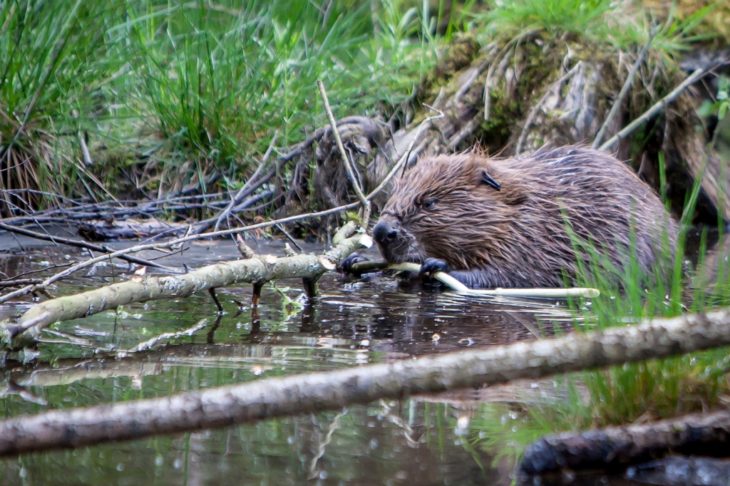Beavers in the frame
May 2019 has been a big month for beavers. Following decades of work, beavers officially became a European Protected Species (EPS) in Scotland on 1 May. This is a highly significant milestone for all involved and represents a huge amount of work from conservation organisations, volunteers, Scottish Natural Heritage and others.
But the hard work doesn’t stop there.
In the 400 years since beavers became extinct in Scotland, the way that we use our land has changed enormously. As ecosystem engineers, beavers have the ability to significantly change their immediate environment. Their dam-building behaviour can increase wetland habitat within their territory, helping to promote the growth of their food plants and benefitting a whole host of other wetland species. However, if this wetland creation occurs near productive farmland, farmers may lose valuable crops or infrastructure and as such, beaver management has become a focus for many of the stakeholders involved.

At the same time as the Scottish Government announced EPS status, Scottish Natural Heritage (SNH) issued the beaver management framework, which is the document designed to help ensure that landowners are protected from any of the localised negative impacts that beavers can have. The framework contains guidelines on how landowners should manage beavers on their land, including the criteria under which licences will be issued for the removal of dams or lodges, translocation of animals or, as a last resort, lethal control.
As joint partners in the Scottish Beavers project, the Royal Zoological Society for Scotland (RZSS) and the Scottish Wildlife Trust are part of the Scottish Beaver Forum. The Forum, which includes representatives from across the environment, farming, forestry, landowner and fisheries sectors, provides a useful platform to discuss any issues or concerns relating to beavers in order that these can be addressed collaboratively and constructively.
We are now working hard to ensure that the guidelines are implemented effectively and that the future for both people and beavers is a positive one. As part of this process, we have been focusing on the areas of the currently published guidelines that require strengthening:
- The use of lethal control as a last resort. We have always been clear that lethal control should only be seen as a last resort, for example where there is a risk of serious damage to property or risk to public health. Alternatives must have been properly assessed before this option is considered and as such, we would like the wording in the framework to reflect this unequivocally.
- Translocation as an alternative to lethal control. We would like to see more emphasis put on translocating beavers. If other mitigation methods have failed, translocation removes the beaver from the area of concern without resorting to lethal control and may help them spread into new areas where they will have greater positive impact.
- A stronger focus on avoiding lethal control during the period when young beavers (kits) are dependent on their mothers. At odds with the licencing measures to control other mammals in Scotland, there is currently no ‘closed season’ during the period that kits are dependent on their mothers. For conservation and welfare reasons, we have been strongly advocating for added safeguards between 1 April and 16 August.
- Increased monitoring. The management framework states that any action under licence “must not harm the conservation status of beavers in Scotland”. We now need to see attention turn to ensuring that we have sufficient data to properly assess this.
- Everyone working together to achieve the best outcomes for beavers and people. We welcome the constructive spirit in which different parties have worked together to listen to each other’s needs. We now hope there will be transparency in the issuing of new licences, their purpose and renewal. We welcome plans to support trials of new mitigation methods and look forward to seeing details of the extent to which the mitigation scheme is being used.
Ultimately, scientists, conservationists, decision makers and landowners will all need to continue to work together to ensure that Scotland reaps the benefits of having these wonderful creatures back in our natural environment.
Jo Pike, Chief Executive, Scottish Wildlife Trust
Dr Charlotte Macdonald, Director of Conservation and Living Collections, RZSS
Help protect Scotland’s wildlife
Our work to save Scotland’s wildlife is made possible thanks to the generosity of our members and supporters.
Join today from just £4 a month to help protect the species you love.
Preface
May 2019 has been a big month for beavers. Following decades of work, beavers officially became a European Protected Species (EPS) in Scotland on 1 May. This is a highly …
